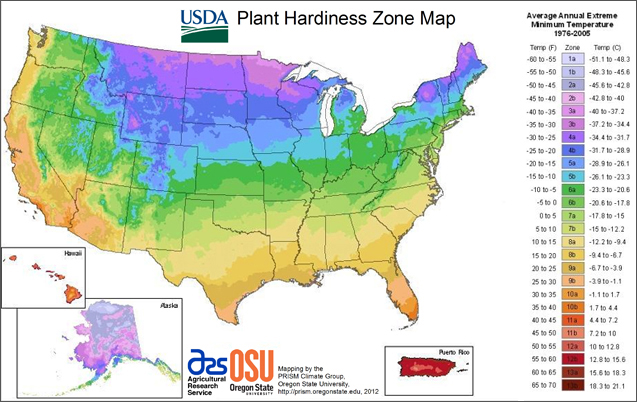Suddenly interested in gardening? Here are four things you can do right now.
The growing season is not quite upon us, but the extra time indoors allotted by social distancing, self-isolation and self-quarantine has given people time to think about things they might want to do outdoors — namely, gardening. The ability to grow your own food now might seem more appealing than ever, and the stress-reducing benefits of spending time in the garden offer a much-needed respite from our busy world.
If you are curious about gardening, here are four things beginning gardeners can right now to start planning for the growing season right now.

Figure out your growing zone
What you are able to grow and when you are going to grow it is going to depend on the conditions of where you live. The U.S. Department of Agriculture (USDA) geographically delineates “hardiness zones” that represent a region’s minimum average winter temperatures.
Though the map isn’t perfect — it starts to falter out West, where elevation changes make it more difficult to determine growing zones (a better option here is the Sunset Growing Zones) — it is still a handy tool for beginners looking to plan their planting calendars or determine crops that will grow well where they live. Seed packet maps are often based on this information as well.
The best way to determine your hardiness zone is to use the USDA Hardiness Zone Map. The online version has a feature where you can search hardiness zone maps by zip code or state.
Start seeds indoors
Especially if you have a short growing season, starting seeds indoors is a great way to get a headstart on the growing season. Make some seed starting pots from old newspapers and order some seeds and seed starting mix to get started growing seedlings indoors. Here is what I learned from starting seeds for the first time, as well as the DIY seed starting rack I will be using this year to help my seedlings thrive.

Consider your space
Before the growing season even starts, take stock of the space you have available for growing. You may have a large yard that is perfect for building a few raised beds, or you may have a tiny patio outside of your apartment. Either way, you have plenty of options for gardening. You may want to consider container gardening, or look at other ways to garden in your front yard. There are also apps you can use to plan your planting.
Plan with square foot gardening
If you have garden plots available to you — ones that you purchased, built, or reserved through your community garden — you can easily plan to maximize your space through square foot gardening. Square foot gardening is a simple, mathematical gardening method pioneered by retired engineer Mel Bartholomew that uses shallow raised beds and a specialized growing medium. Each square can hold a certain number of plants — generally either one, four, nine or 16 — depending on how much room the plant needs to grow.
You can purchase Mel Bartholomew’s book — the third and latest edition of “All New Square Foot Gardening” was published in November 2018 by Quarto, but previous editions are also readily available at booksellers — or use the many online resources available for square foot gardening to start planning.
